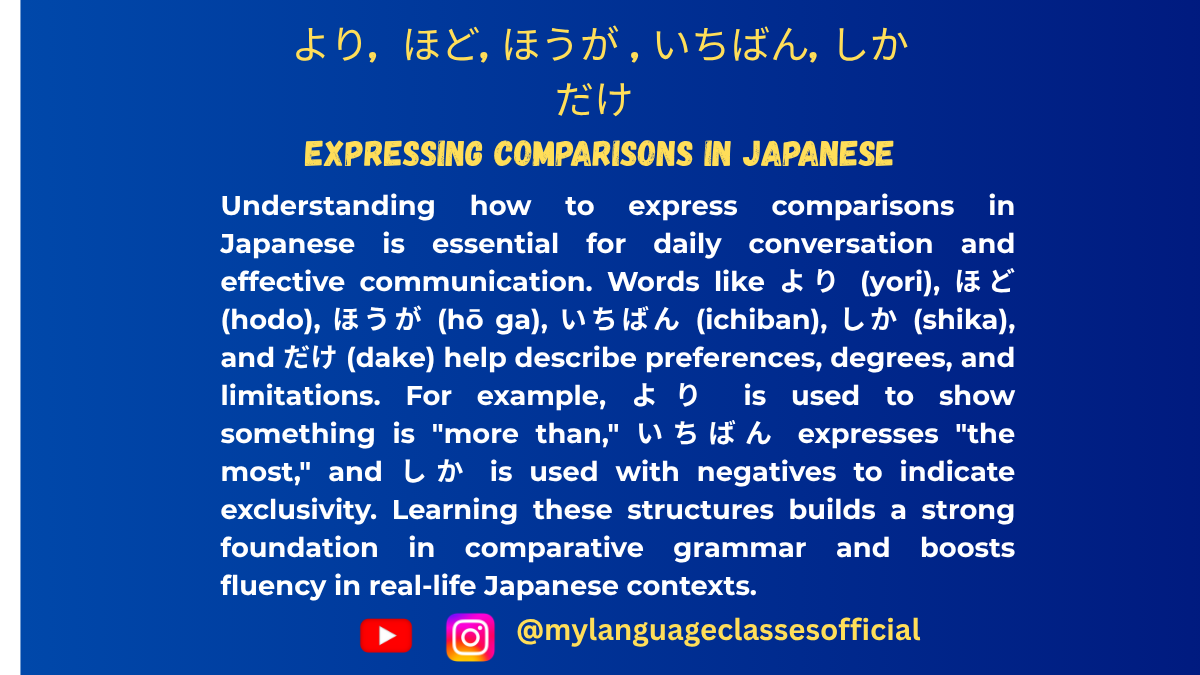Your cart is currently empty!
Tag: japanese sentence structure with yori and hodo

Mastering Comparisons in Japanese より, ほど, ほうが, いちばん, しか, and だけ
Expressing Comparisons in Japanese より, ほど, ほうが, いちばん, しか, and だけ
When learning Japanese, one of the most important concepts is mastering the art of comparisons. Whether you’re talking about how something is “better” or “more” than something else, or … Read more

